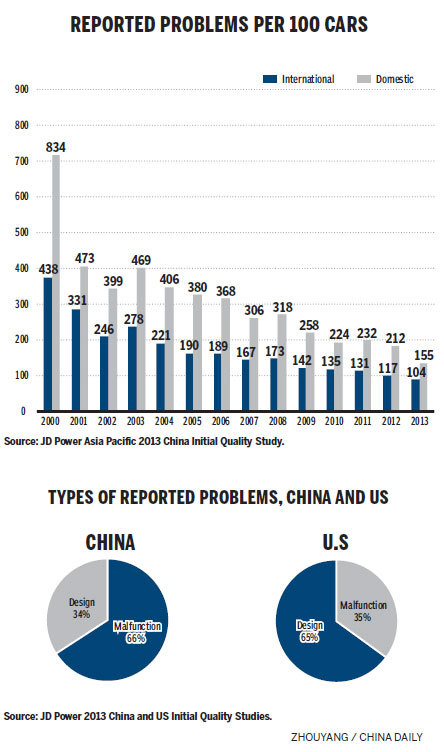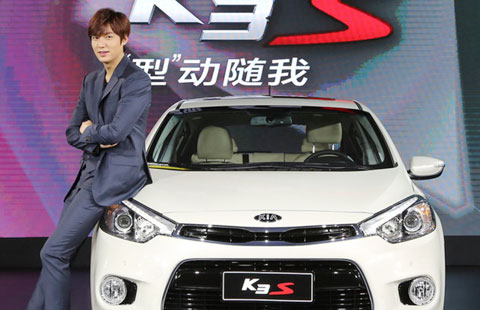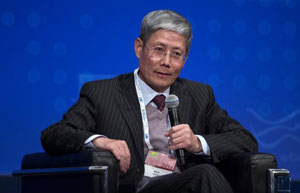Survey: Big strides in domestic auto quality
By Jacob George (China Daily) Updated: 2013-11-21 10:25Domestic brands achieved tremendous improvement in vehicle quality in 2013, with four - GAC Motor, Venucia, Roewe and Luxgen - performing above industry average, according to the study.
In comparison, no domestic brand exceeded the industry average in the JD Power Asia Pacific 2012 China Initial Quality Study.
Such progress can be attributed to Chinese domestic brands' remarkable efforts in improving on the 4Ps - process, people, parts and product design - that contribute to quality.
Domestic manufacturers have learned and continue to learn how to implement standardized practices in terms of design and manufacturing processes.
In addition they frequently recruit executives and experts with international experience, utilize parts from global supplier companies and incorporate product designs that are benchmarks in terms of satisfying consumers.
Shift to design quality
But that is not the whole story.
Quality improvement is like a marathon. As manufacturers continue to improve and consumers continue to be more demanding, freedom from defects and malfunctions will be a basic requirement for automakers in the Chinese market just like it is in mature markets such as the US.
This reveals an important distinction between customer complaints, which can be classified as defects - where a feature or component actually broken and a "dis-satisfier", a customer complaint about something that is functioning as designed but doesn't quite meet their expectations, such as fuel economy.
In China, approximately 66 percent of reported problem are defects, while in the US only 35 percent are defects. Consumers in the US market tend to complain more about dis-satisfiers - for example when their blue-tooth device doesn't pair easily.
The long term winners in the quality marathon will be the companies that can eliminate defects as well as mitigate dis-satisfiers.
Decreasing dis-satisfiers will necessitate tailoring vehicles to the Chinese market. Examples include comfortable second row seating for chauffeured vehicles, easy-to-reach tissue boxes and swipe-screens for easily entering Chinese characters into navigations systems.
Chinese domestic manufacturers need to focus on the end game: Delivering defect-free vehicles and then adapting them to the voice of the Chinese customer.
The writer is the vice-president and general manager of global consulting services, JD Power
- Western restaurants scramble for Chinese breakfast market
- China's legislature adopts new Environmental Protection Law
- China to further develop village tourism
- What's hot at Beijing auto show?
- Highlights of Beijing Auto Show
- International hotelier upbeat on China's tourism sector
- Online book sales boom in 2013
- Information tech consumption jumps in Q1


















